You can use the free SiMetrix Circuit Simulator to run My Simulation. Or you can use my observations, tips and techniques - to help you create a suitable file for a different simulator programme. If you do decide to create your own simulation - it's still worthwhile downloading SiMetrix - just to compare my results.
SiMetrix Screenshot
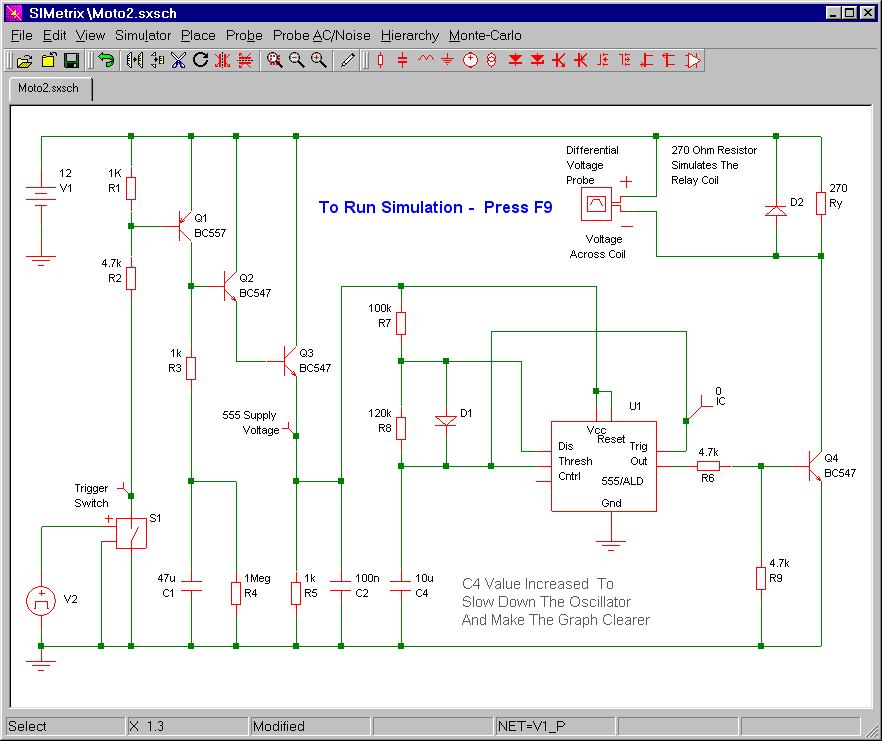
The circuit uses a small single pole relay - such as the 12v Omron G2E. The coils of these low voltage DC relays behave just like resistors. I've used a 270 ohm resistor (Ry) to simulate my relay coil. The Differential Voltage Probe measures the voltage across the relay coil. And the state of the relay is determined by the level of that voltage.
You'll see from the graph below that - on activation - the voltage across the coil rises sharply to 12v. This causes the relay to energize - and the siren will sound. Over the following minute or so - the coil voltage continues to rise and fall. This causes the relay to energize and de-energize. And the siren will sound intermittently.
In order to make the graph clearer - I've increased the value of C4 from 4.7uF to 10uF. This reduces the frequency of the output oscillator - and makes the image of the changing relay coil voltage - clearer. If you restore C4 to 4.7uF - you'll see what I mean.
While the relay is energizing and de-energizing - the 555 supply voltage is falling. 70 to 80 seconds into the simulation - the 555 supply voltage is so low that the oscillator simply stops.
Graphs
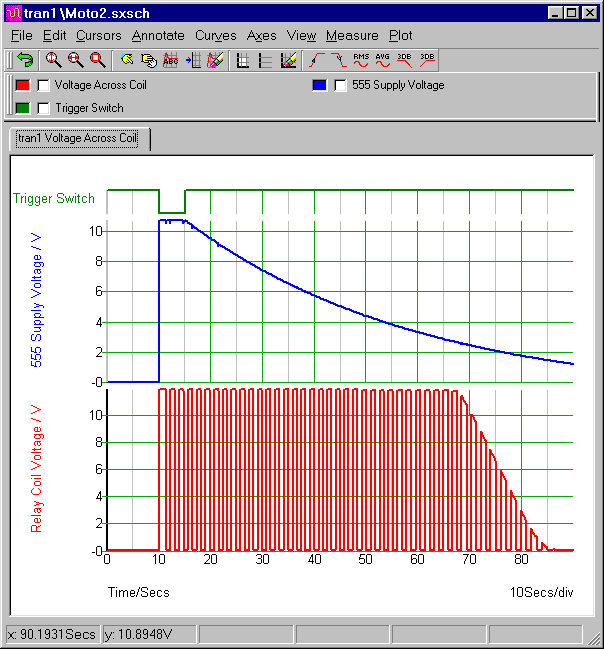
The green line represents the trigger pulse. It's produced by S1 and V2. In standby mode V2 is always 0v. But ten seconds into the simulation - it rises to 5 volts - for five seconds. This switches S1 on. And S1 connects R2 to ground. In other words - when V2 rises to 5 volts - it closes the trigger switch - turns Q1 on - charges C1 - and activates the alarm.
The Trigger Pulse Settings (V2)
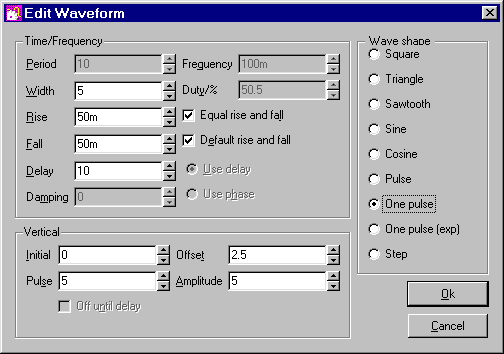
Power Supply Setting
The default power source is 5vdc. If you ever need to change that value - select the power source symbol (e.g. V1 in the schematic) - and press F7. Then change the contents of the "Parameters" window - by typing in your new value. Alternatively - you can simply use one of the preset buttons provided.

Analysis Settings
The analysis is fairly straight forward. The "Mode" should be set to "Transient". And the "Stop Time" should be long enough to allow the alarm to complete one "activation and reset" cycle. I chose 90 seconds.
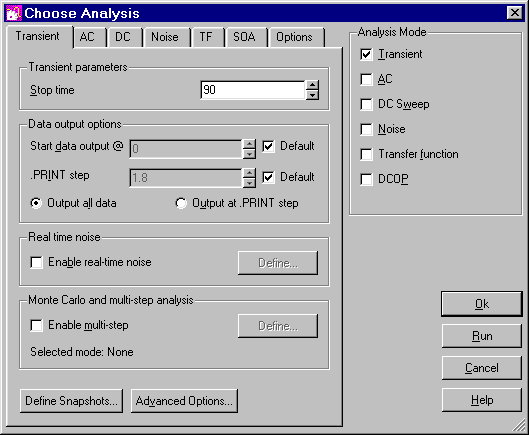
To coax the simulation to run successfully - I had to increase the value of the "Relative Tolerance" figure. You'll find it under the "Options" tab. All the remaining settings are "Default". There will be times when you'll find it necessary or advantageous to change the other "Tolerances" - the "Integration Method" and the "Time Step" etc. But for this circuit - the remaining default settings are adequate.
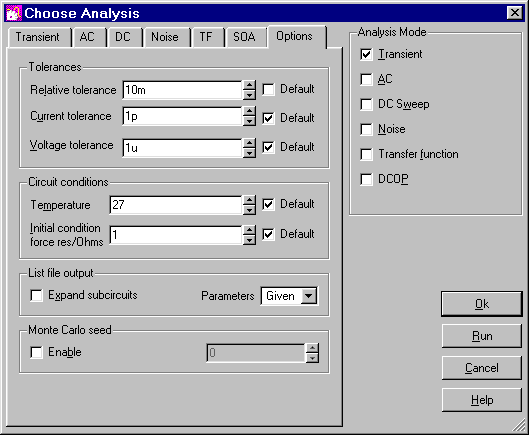
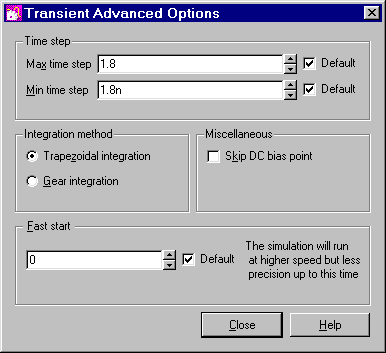
Why Is C3 Missing?
I tried all three of the 555 models supplied with SiMetrix 5.40. None of them worked very satisfactorily - sometimes aborting the simulation for no explained reason. I found that - with this circuit at least - the 555/ALD worked most reliably - but only if I left the "Cntrl" pin unconnected. Try adding C3 yourself - and see what happens.
Download Simulation Files
|